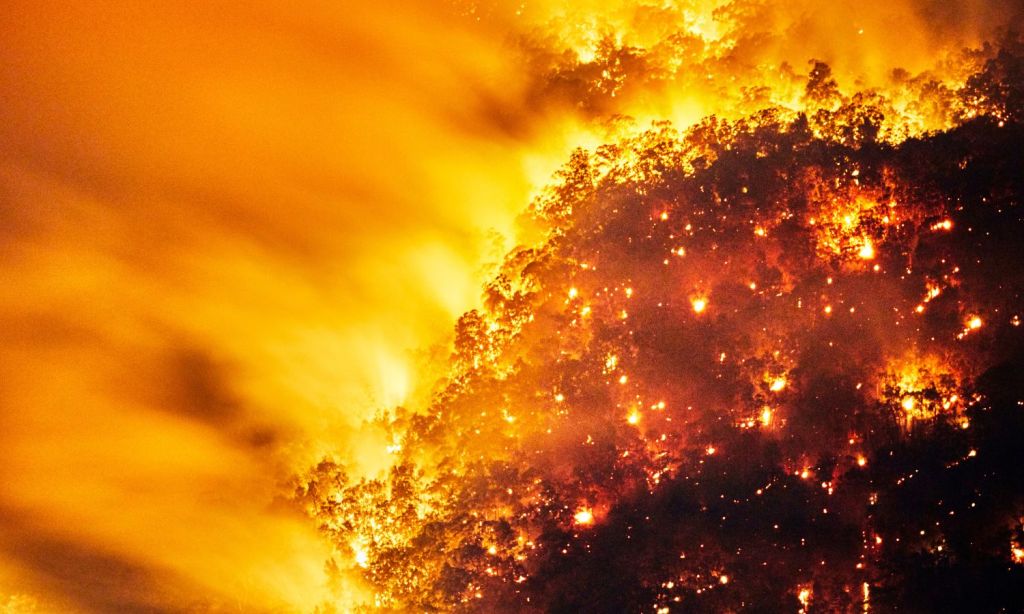Treasurer Jim Chalmers has given a speech in Rockhampton warning that climate change could cost Australia $1.8 billion in crop losses alone by the 2060s.
Chalmers spoke at the national drought forum where he unveiled the latest Treasury modelling of the economic impact of climate change.
“The latest projections also show the significant impact that climate change could have on our regions,” Chalmers said.
“If further action isn’t taken, Australia crop yields could be four per cent lower by 2063 — costing us about $1.8 billion in GDP in today’s dollars.”
With the climate worsening thanks to the man-made doubling of carbon dioxide in the atmosphere since the start of the Industrial Revolution, extreme events like the black summer bushfires and the Northern Rivers 2022 floods are far more likely.
Each of these events, Chalmers warns, could cost the economy about $1.5 billion and that, if no further action on climate change is taken, those costs would increase.
“What was $335m in Commonwealth spending on disaster recovery in 2017-18, has become around $2.5bn in 2022-23,” he said.
“So, the pressure of a changing climate and more frequent natural disasters is constant, cascading, and cumulative.”
Conferring with regional communities about our new White Paper on jobs and opportunities, the economic contribution of primary industries, and the climate challenges ahead at the National Drought Forum in Rocky QLD with @MurrayWatt and @AnthonyChisholm @NationalFarmers #auspol pic.twitter.com/fVnps8JrM6
— Jim Chalmers MP (@JEChalmers) September 26, 2023
The latest figures are in line with previous announcements over the cost of climate change to Australia. Last month, the Treasury released the sixth intergenerational report which shows that the impact of a warming climate will cost the country up to $423 billion over the next forty years in lost productivity alone. It also modelled that food production would decline and taxpayers would have to cover the rising costs of damages caused by increased disasters.
That modelling is based on the premise that the world will overshoot the 2-degree temperature increase of the Paris Agreement, which we are very much on track to do.
However, even these figures are very likely underselling the true impact of climate change on the economy. The topline figure quoted by the intergenerational report roughly works out to only 0.3% of GDP per year in today’s figures. As the report itself acknowledges, it’s only a partial examination.
“$423 billion in damages isn’t even in the real ballpark,” Australian economist Steve Keen told The Monthly.
“They’re not modelling how labour productivity will go down when huge natural disasters wipe out whole towns at a much more frequent and severe rate than we’ve seen in the past,” Timothy Neal from the University of New South Wales Institute for Climate Risk & Response also told the publication.
Previous reports into the full economic cost of climate change to Australia suggest the true figures are somewhere between $2.7 and $3.4 trillion over the next 30 years. For context, Australia’s current annual GDP is roughly $1.5 trillion. The latter estimate, from Deloitte, shows that by the 2050s, climate change essentially wipes out all economic growth, causing “economic losses on par with Covid, getting worse every single year”.
The Treasury appears to be highlighting Australia’s increasingly untenable position by attempting to get serious about the true looming scale of the disaster that awaits us while other departments continue to green-light fossil fuel expansions.
Labor’s ‘historic’ legislation of net zero emissions by 2050 and the passage of other laws that seek to curb emissions have been deemed progressive, but not nearly strong enough. National emissions are currently rising off the back of the COVID-induced decline and, in real terms, have dropped by only 1% since 2005. The changes needed to meet those targets become increasingly dramatic the longer they are delayed.
As the latest announcement makes out, there is no cheap way to fix climate change. Either adaptation is paid for now or the costs of failing to do so are paid for, with interest, down the line.
Chalmers was speaking on the second day of Australia’s first national disaster preparedness forum in Canberra. 200 emergency management groups and disaster response agencies are meeting to prepare for the hot, dry El Nino summer ahead.
Related: Feeling Stressed About Climate Change? You’re Not Alone
Related: If We Want to Get Serious About Climate Change, We’re Going to Need Cows to Stop Farting
Read more stories from The Latch and subscribe to our email newsletter.







